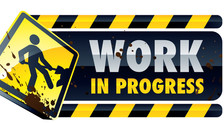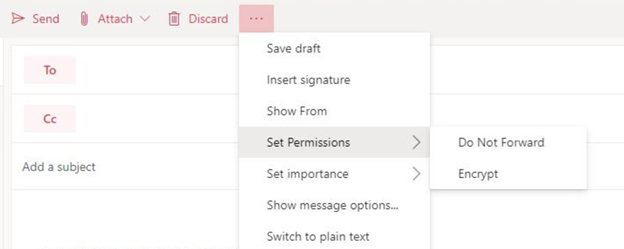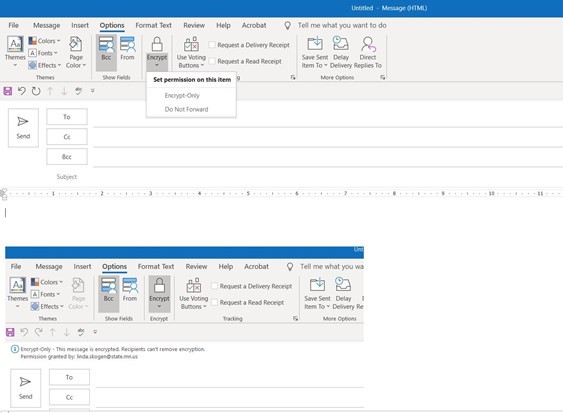
February 2022
 |
|
Communication Update
We are in the process of revising our communication strategies and you will begin to see some differences in our newsletter and websites. Our goals are to transition with as few disruptions as possible and to provide resources that are consistent and easy to use. Please watch for surveys that may come to you. Your voice is important to our plans!
|
Dislocated Worker and Federal Adult Programs
Please email all requests, reports, and technical assistance questions to the Dislocated Worker Federal Adult Programs general email at dwfaprograms.deed@state.mn.us
STAFFING UPDATES!
- Please join us in welcoming Frederick (Fred) Nah, MBA, CFE, as a Grant Specialist Senior to the Dislocated Worker and Federal Adult Programs team! Fred has over 20 years of experience in grant management and fiscal analysis and comes to us from the Minnesota Department of Revenue.
WIOA Adult, WIOA Dislocated Worker, National Dislocated Worker Grants, and Minnesota State Dislocated Worker
Performance
Program Year 2021, Quarter One Performance Outcomes for Minnesota State Dislocated Worker, National Dislocated Worker Grants, WIOA Dislocated Worker, and WIOA Adult programs are available for review. Highlights include:
- All programs met or exceeded the 2nd Quarter Employment goal this quarter. Participants in this measure exited the programs between July 1, 2020 and September 30, 2020;
- All programs met or exceeded the 4th Quarter Employment goal this quarter. Participants in this measure exited the programs between January 1, 2020 and March 31, 2020;
- Most programs exceeded (and all met) the median earnings goal this quarter. Participants included in this measure exited the programs between July 1, 2020 and September 30, 2020; and
- Most programs exceeded (and all met) the credential attainment goal this quarter. Participants included in this measure exited the programs between January 1, 2020 and March 31, 2020.
Senior Community Service Employment Program (SCSEP) & Legacy Program
SCSEP
- Please send all SCSEP and Legacy grant requests, including Technical Assistance requests and Quarterly Narrative Reports, to DEED@state.mn.us in Heather’s absence. RPRs and SFRs should continue to be sent to DEED.FSR@state.mn.us on or before the 20th of each month.
- Data Validation for SCSEP began in January and should conclude in March. DEED monitors sent an initial email on 12/20/2021 regarding the plan and process. Please pay close attention to the upcoming deadlines.
Legacy Program
- The Legacy Program ended on 10/22/2021 and the final report to DOL is due on 2/15/2022. As we prepare the final report, we may be reaching out for information.
Minnesota Job Skills Partnership Board
- Next meeting will be March 7, 2022. Please submit your supplemental funding request no later than Feb. 7th.
Adult Career Pathways (ACP)
Please contact your Grant Coordinator directly with any questions regarding Adult Career Pathways.
Legislative Direct Appropriation Grants/Competitive Grants
SFY 2022-2023 Contracts
The ACP team has been busy finalizing the last Direct Appropriation contracts for SFY22. In addition to four additional Pay-for-Performance contracts that came out of this past session, we increased the number of directly appropriated contracts to sixteen Adult Grantees.
Award letters for all competitive grants have been sent out.
Workforce One training for ACP programs will be held February 22 (P2P specific training) and March 1 (all other ACP programs training). Please watch your inbox for invitations from your Coordinator.
The Targeted Community Capital Project RFP was released on Friday October 22nd. This grant will award $18 million to non-profits organizations and government entities within Minnesota for capital projects. Projects utilizing these funds must result in providing, increasing, and/or expanding access to economic development, education or workforce development programs or services to underserved communities or economically disadvantaged persons or groups. Applications are currently in the review process. We anticipate notification mid-March.
SFY 2020-2021 Contracts
The ACP Team is excited about all the great work that occurred across the state in SFY 20-21!
As a reminder, all participants enrolled in any SFY20-21 ACP program MUST be appropriately exited from Workforce One (WF1) upon the completion of the grant.
In order for your organization to capture outcomes for these participants, all participants must Exit from Workforce One (WF1) within 45 days from the expiration of the grant contract.
If your organization received a SFY22-23 grant for the same services/training and have participants in the midst of receiving services or attending training by the end of your SFY20-21contract, these participants can be re-enrolled in the SFY22-23 grant. In this case, these participants will have to be exited in WF1 with the Program/Type Transfer exit reason, then re-enrolled into your SFY22-23 program.
It is imperative that the participant is EXITED from the SFY 20-21 funding and ENROLLED into SFY22-23 with a new application. Do not just change funding streams on activities. If this happens you will not capture the service to the participant on your SFY20-21 grant and they will not be counted in outcomes.
You must make sure that all enrollment documents (intake/application, IEP, etc.) are current, up-to-date, and signed prior to enrolling into the new funding stream. It is not necessary to complete new enrollment documents (with the exception of the “How we use your personal information”) if eligibility was determined within the last 6 months. Providing a case note in WF1 detailing the transfer will be required. Workforce One will not allow an enrollment with paperwork outside of 180 days (6 months).
Please reach out to your Grant Coordinator with any questions!
SNAP E&T 50/50
The ACP team’s, through the partnership with DHS, SNAP 50% Reimbursement program has provided over $90,000 in additional funds to ACP Grantees in SFY21! We hope to recruit more Grantees in SFY22/23 to take advantage of the 50% reimbursement on expenses already incurred through ACP’s programs.
If your proposal Grant Information Summary page indicated interest in the SNAP E&T, an ACP Coordinator will be in touch inviting you to an informational webinar.
MN Family Resiliency Partnership (formerly known as Displaced Homemaker Program)
Information about the Minnesota Family Resiliency Partnership program can be found on DEED’s ACP webpage at https://mn.gov/deed/job-seekers/find-a-job/targeted-services/homemakers/.
ACP Guides
ACP’s Operations Guide is now available from the ACP home page. The Guide documents current practices for ACP. The ACP Team meets monthly to discuss suggested additions, modifications, and other changes to the guide and update as necessary. It does NOT include measures implemented in response to COVID-19, which are listed separately.
Adult Career Pathways Webpage
The ACP webpage is currently under construction and may look a bit different. All the information is still available. Once it is complete, we will make an announcement.
ACP webpage: https://mn.gov/deed/programs-services/adult-career-pathways/ .
Trade Adjustment Assistance
Please email all requests, reports, and technical assistance questions to the Trade Adjustment Assistance general email at deed.taa@state.mn.us
Navigating TAA Training
TAA is proud to announce the release of a new resource for customers in TAA-approved occupational skills training called the Navigating TAA Training Booklet along with a one-page summary called Navigating TAA Training Quick Summary Guide. All current TAA customers in training with an email address and Dislocated Worker Counselors should have received a copy of these documents via email on 2/3/2022. You can also reference the materials in the DEED TAA Forms section https://mn.gov/deed/programs-services/dislocated-worker/counselors/forms/, the DEED Counselor Portal under Resources and Program Materials https://mn.gov/deed/programs-services/dislocated-worker/counselors/training/, and on the TAA CareerForce page https://www.careerforcemn.com/TAA. TAA invites DW Counselors to discuss these resources with your TAA customers.
TAA must be the primary source of funding
TAA must be the primary source of funding for assessments and training costs for those eligible under a TAA petition. If a person is interested in pursuing training that results in an industry-recognized credential -- for long-term or short-term training -- TAA must receive the training application before Dislocated Worker funds can be used. This was a finding in TAA’s 2019 federal monitoring report and is reiterated in the Final Rule - 618.625 https://www.federalregister.gov/d/2020-13802/p-1829
Assessments: TAA offers COPS, CAPS, COPES
TAA requires a standardized assessment be submitted with the training application. TAA offers the COPS, CAPS, COPES free of charge to customers. If you’d like to request electronic access to the assessment for a customer, follow these steps:
- Send the customer’s name and email address to the general TAA email (taa@state.mn.us) requesting TAA send an invite via email to the customer
- The customer will follow the instructions in the email to complete the assessment
- Request customer share the results with you
- Submit a copy of the assessment results with the TAA training application
Petitions
Here’s the link to check the status of petitions with U.S. Department of Labor
https://www.doleta.gov/tradeact/petitioners/taa_search_form.cfm
- Terminated
- 98111 – Medtronic, Minneapolis: terminated because workers are eligible under 95858 in Indiana. There are no Minnesota workers impacted.
- Pending DOL’s investigation
- 98076 – Emerson Process Management LLLP, Eden Prairie
- 98104 – Baxter Healthcare, Brooklyn Park
- 98176 – Nexplore USA, Minneapolis
- 98171 -- NRI Electronic, Rochester
Labor Market Information
If you have questions about LMI information, please email deed.lmi@state.mn.us
By The Numbers
Every quarter, LMI analysts look ahead to forecast job growth over the coming year. The state of Minnesota is projected to add just under 62,000 jobs between the third quarter of 2021 and the third quarter of 2022, an expansion of 2.1% over the year. This rate of employment growth is expected to slow from the more robust recovery that characterized mid-2020 to mid-2021, but continues the state's march back to economic recovery. Much of the short-term employment growth projected for the next year can still be attributed to the continued recovery from historic employment losses during the early part of the pandemic. The pandemic will continue to impact the behavior of businesses, workers, and job seekers during the coming months. These pandemic impacts are playing out against larger, long-standing demographic trends.
The tight labor market that Minnesota employers had been experiencing up until the pandemic recession returned to a much greater extent in the second quarter of 2021, with the state setting a record for the number of job vacancies while the number of unemployed jobseekers dropped back to pre-pandemic levels. Employers reported 205,714 job vacancies, which was an 84% increase from the second quarter of 2020 at the outset of the coronavirus pandemic and up 40% compared to the second quarter of 2019, which was the previous record high. With more than 205,000 vacancies and less than 125,000 unemployed workers, the state's jobseeker-per-vacancy ratio dropped back to 0.6-to-1, meaning there were again more jobs available than workers available to fill them. That has been the case in Minnesota in four of the past five years, with vacancies steadily increasing without enough workers to fill the open jobs.
Minnesota is a net importer of labor, meaning we attract more non-residents to fill jobs than there are residents who leave the state for work. As Minnesota employers look for ways to find new workers, they may want to look for ways they could leverage commuting patterns when attracting talent. And from an occupational standpoint, Minnesota shares many similarities with its neighboring states, but there are also some notable differences. Minnesota has a greater concentration of jobs in higher-paying service-providing occupational groups than neighboring states. This is a key part of Minnesota's appeal as an employer destination.
ETPL Administration and Monitoring
If you have questions about the ETPL, please connect with ETPL Administration at etpl.deed@state.mn.us
The following content is a reminder and training to support you in keeping your client’s information protected.
I need to send PII, such as the name of a client. How do I do this securely?
PII means Personally Identifiable Information. This includes name, contact information, email, birthdate… on up to social security numbers.
When possible, in meetings and conversations, PII should not be shared. For example, do not copy the client for administrative tasks, such as emails for approvals.
How to identify a client without releasing PII?
Send the WF1 participant ID or WF1 Case ID number.
If you need to send PII, such as to a school that would not have the WF1 IDs, any email containing PII about a client should be encrypted.
Scenario 1: DEED staff sending PII internally
PII is protected at the server level (never leaves DEED).
Scenario 2: DEED staff sending PII internally but does not want the PII shared forward.
PII is protected at the server level (never leaves DEED). Use the ‘Do Not Forward’ function.
Scenario 3: DEED staff sending PII to an external partner.
Staff sending the email need to encrypt the email. Below are instructions for two ways to encrypt an email in Outlook from DEED. If you are a partner, and do not have a state email, check with your team’s IT person to learn how to send an encrypted email.
Encryption Steps Option 1: Encrypt or Do Not Forward Permissions
Encryption and Forwarding Permissions in Outlook 365
From Outlook in Office.com it’s two selections in the email design. You select either Do Not Forward or Encrypt. If you want to prevent others from sharing the email, use "do not forward." Encryption only keeps the file from being shared outside of the State network, so the email can be forwarded to other staff. “Do not forward” encrypts and keeps the receivers from sharing further.
 If needed in alternative format, please contact dwfaprograms.deed@state.mn.us
In Outlook application
When creating a new email, open Options, click the arrow under Encrypt, choose to “Encrypt Only” or “Do Not Forward”
Encryption Steps Option 2: Encryption Using DEED Server for Encryption
An alternate way to encrypt an email for DEED staff when sending an email to an email outside of DEED’s enterprise (i.e. not DEED staff). You can start your Subject line with [Secure] or [Encrypt] – use square brackets, not curly brackets.
Some ways to do this wrong that DO NOT Encrypt your email: [external] {encrypt} {secure} [do not forward] [safe] [PII]
 If needed in alternative format, please contact dwfaprograms.deed@state.mn.us
This newsletter is meant for DEED Grantees, Providers, and Employment Counselors. We want this e-Newsletter to meet your needs! We encourage you to send your comments, suggestions and subscription requests to deed.taa@state.mn.us. Find past issues of Partner Express.
|